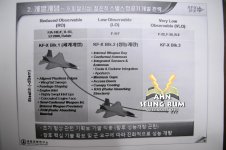Then comes the problem,The radar wave emitted by the airframe creates a radar signature, active cancellation removes that signature. In some cases, the signature can be entirely removed, or the signature is so small that it's considered to be dust, water vapour etc, ie clutter, and is rejected.
This process is called destructive interference.
How can you use a few sensors to interferometrically process all the radar waves reflected by the fighter jet
In general, India got the Meteor, the question is what to do with the SU30MKI. Derby ER, Israel claims a maximum range of 100KM, Astra should be around 80KM,India has been looking for new options since early 2010s. For the MKI, the choice was between Derby ER and Meteor. Now Indian options have come up. Pakistan had no options due to the unofficial arms embargo from the West, so they seem to have been waiting for China to give them some.
Anyway, India did not have long range options until 2017. Europe denied Meteor for Russian jets while Derby ER was still in development until 2017. But the MoD and IAF have been slow in making their choice. It's just bad luck for us that we didn't enter the fight with Derby ER or Meteor (our main preference).
I did remember wrong,The first airborne AESA for fighters is APG-63(V)2, introduced in 2000. Followed by Japan'sIn general, India got the Meteor, the question is what to do with the SU30MKI. Derby ER, Israel claims a maximum range of 100KM, Astra should be around 80KM,in 2002 for the F-2, followed by UAE's F-16 B60 with APG-80 in 2004. Then came the F-22's APG-77 in 2005
We disagree on some basic factsIncorrect. Stealth is simple arithmetic. System design is not.
There is a paper in China that did a computer simulation of the Meteor missile and got the data I'm talking aboutI never said anything about maximum range. Everything else is defined by tactics. It has nothing to do with RC
Right. After all, in the 1980s, China had just had enough food, and the Air Force had just begun to develop the J8II.Yes, we are introducing RCS reduction in later blocks. We are doing what the French accomplished in the 80s. It doesn't change the fact that our jets are behind the Rafale by a significant margin.
in My Humble OpinionLook at TEDBF, it incorporates all the main features of Rafale and refines it further. It's obviously gonna have a much lower frontal RCS than Rafale
India made the prototype first and we will talk about it later. There are too many PPTs in India.
I don't know how you came to this conclusion, only on the body platform, I can't see any essential difference between the Rafale fighter and the su27, F16, F15,But what it means is the J-10 is way behind the Rafale's design
If we talk about stealth design, I don't think the stealth design used by Rafale can make a difference with them. I personally think that the frontal RCS of Rafale is about 1-3
as the first fourth-generation aircraft in China, the J10 has many original regrets, such as too large frontal projection, insufficient multi-purpose capability, and slightly lower range. Of course, these have been improved on the J10C.
Here I share an experience of General Wang hai, the father of the modernization of the Chinese Air Force
When the Rafale and Typhoon fighter jets were just commissioned, many Western media said they were the 3.99-generation fighter jets second only to the F22. Many people wanted to follow the example of Europe to develop China's 3.99-generation fighter jets.
General Wang hai strongly opposed, "The so-called 3.99-generation fighter is actually a rhetoric that Britain and France lag behind the US and the Soviet Union's third-generation fighters. What we need is a fourth-generation fighter similar to the US ATF plan." General Wang Haihai presided over the initial development of the J20.
So far, China has benefited a lot from this decision.






